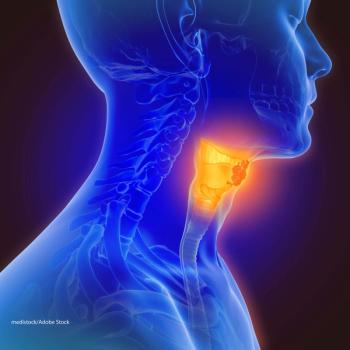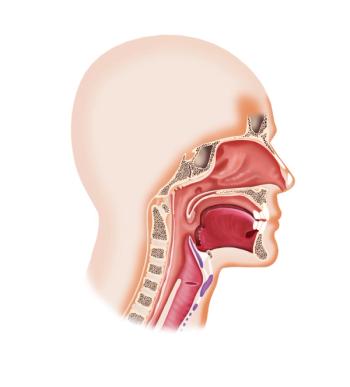
Oncology NEWS International
- Oncology NEWS International Vol 9 No 3
- Volume 9
- Issue 3
Advocate Urges Greater Attention to Cancer Prevention Research
ALEXANDRIA, Va-Since she founded the Cancer Research Foundation of American (CRFA) in 1985, the year after her father’s death from head and neck cancer, Carolyn “Bo” Aldigé has become a persuasive and respected advocate for cancer
ALEXANDRIA, VaSince she founded the Cancer Research Foundation of American (CRFA) in 1985, the year after her fathers death from head and neck cancer, Carolyn Bo Aldigé has become a persuasive and respected advocate for cancer prevention.
On Capitol Hill and within the Executive Branch, she has vigorously preached the message that cancer often can be prevented. CRFA has funded prevention research by more than 200 scientists at some 100 academic institutions.
In addition to serving as CRFA president, Ms. Aldigé is in her second consecutive term as president of the National Coalition for Cancer Research.
In this interview with Patrick Young, ONIs Washington Bureau Chief, Ms. Aldigé examines cancer prevention past, present, and future.
ONI: What has changed in cancer prevention since you formed CFRA?
MS. ALDIGE: One thing that has changed is the public perception of the fact that cancer is a preventable disease. That is much more widely understood now. If 15 years ago you said cancer and prevention in the same sentence, people thought you were crazy. There was a mindset in 1985 that cancer was something you either got or didnt get. A lot of people understood that smoking was related to several kinds of cancer, but, beyond that, very little was known about cancer as a preventable disease.
ONI: This was true of both physicians and the public?
MS. ALDIGE: Absolutely.
ONI: What has happened in the intervening 15 years?
MS. ALDIGE: One is advocacyorganizations such as ours that have started spreading this message at the grassroots that cancer is a preventable disease and that there are great strides being made in cancer prevention research.
We know more about the correct recommendations to make to people with regard to measures that they can take, both for primary prevention, meaning not getting cancer in the first place, and for secondary prevention, which is cancer screening.
We have gone through a phase of gathering information and conducting scientific studies in the area of chemoprevention, which was established as a field only in the early 1980s. Today, we understand why we say you should eat five fruits and vegetables daily.
Another thing that has changed is that we now understand prevention much more at a molecular level. We are learning how to intervene much earlier in the process because we know where the process can be interrupted at the molecular level. That leads to prevention, because precancerous conditions are being picked up before they can develop into cancer.
ONI: What are some examples?
MS. ALDIGE: We have funded a study at the Fox Chase Cancer Center that is looking into the possibility of using calcium as a preventive agent early on in women who are genetically susceptible to breast cancer.
We have funded a lot of studies in the area of COX-2 inhibitors because there is great evidence to show that COX-2 is highly implicated in the carcinogenic process. If you can identify inhibitors of COX-2, you can use them in the treatment of precancerous lesions.
That is what we are really doing nowlearning to treat premalignant lesions. There is going to be a paradigm shift in our thinking about prevention. We will probably stop using the word chemopre-vention and start talking about the treatment of precancerous lesions.
ONI: What do you see as major prevention advances in the first decade of the 21st century?
MS. ALDIGE: We will learn more and more about early intervention. We will be able to design therapies that will prevent cancer rather than just treat it.
Tamoxifen [Nolvadex] is, of course, the prime example of that. Celebrex [celecoxib, a COX-2 inhibitor] didnt prevent cancer in a clinical trialthat wasnt an endpointbut it helped to reduce the number of polyps among patients with familial adenomatous polyposis.
Those are two examples of what we now call chemopreventiontreatment for premalignant lesions. There will be many more of those agents brought to market over the next decade.
ONI: Strong efforts have been made to try to prevent smoking, yet we have this ongoing increase among young adults. [See
MS. ALDIGE: And that is awful. But I maintain that the reason teenage girls smoke is for weight control. This is a society that is obsessed with thinness while, paradoxically, a huge proportion of its children are obese. Children are making the decision to smoke by about age 10. They have decided that it is a cool thing to do when they get old enough to be able to get cigarettes. At age 10, parents still are a very strong influence on a childs decision. Children who grow up in nonsmoking households are much less likely to take it up.
ONI: Why do we seem to be failing to engage more people in self-prevention?
MS. ALDIGE: Because old habits die hard. We need to do a better job in the whole behavioral science area and to fund more innovative approaches to behavior changes. Although it may be difficult to change habits, it is not impossible. We have to do a better job at educating the public and opinion leaders about what changes we need to make.
If people would simply follow the recommendations with regard to smoking, diet, exercise, sun exposure, alcohol use, and sexual practices, and follow recommended screening guidelines, we could eliminate about 70% of cancers.
ONI: Are physicians reluctant to push patients toward preventive measures?
MS. ALDIGE: In many cases, and this may be an error of omission as well as commission. I have seen many studies where the single reason women cite for not getting a mammogram is that my doctor didnt tell me to. That is also the case with colon cancer screening. With breast cancer, we can only detect a tumor in the earliest stages, but with colon cancer, we can detect and eliminate conditions that have not yet progressed to cancer. We are really able to prevent colon cancer. Yet the screening rates for it are just abysmal.
ONI: What cancer prevention issues do you expect Congress to address this year?
MS. ALDIGE: I would like to see a larger share of the NCI budget dedicated to prevention, and it is important to increase the size of the CDC budget as well because the real efforts at cancer control are coming from the CDC. Its the CDC that moves research into applications that help people prevent cancer.
ONI: Are Congress and the Clinton Administration willing to fund programs for effective prevention measures, such as widespread colorectal cancer screening for the disadvantaged?
MS. ALDIGE: As we educate them about the potential of prevention, more and more will become our allies in the effort, as opposed to devoting so much of our resources into ever more sophisticated treatments.
ONI: Would you support cutting back on some basic research and providing the money to prevention efforts?
MS. ALDIGE: I would like to increase the pie for everyone. When you say basic research, you really arent excluding prevention because a lot of prevention research is done at the basic science level.
ONI: What are your final thoughts?
MS. ALDIGE: People must understand that habits developed over a lifetime can reduce ones risk of contracting cancer. The most difficult part of it all is to motivate people to change behavior. That is really the challenge. We need to teach our children early how to make the right choices so that, as they grow and mature, they will have these habits ingrained.
Articles in this issue
almost 26 years ago
IL-13 Used to Deliver Bacterial Toxin to Brain Tumors in Micealmost 26 years ago
Rituximab/CHOP Combo Effective in Low-Grade NHLalmost 26 years ago
3D CT-Guided Seminal Vesicle Biopsy for Stagingalmost 26 years ago
Elderly Patients Tolerate Breast Cancer Therapyalmost 26 years ago
Coaxial Breast Biopsy Device Provides Diagnostic Specimensalmost 26 years ago
3D Digital Camera Accurately Calculates Breast Shape, Volumealmost 26 years ago
Thermoacoustic CT Under Development for Breast Imagingalmost 26 years ago
Early Local Recurrence After Lumpectomy Predicts Metastasisalmost 26 years ago
Panel Recommends Listing 9 Substances in Carcinogen ReportNewsletter
Stay up to date on recent advances in the multidisciplinary approach to cancer.



















































































